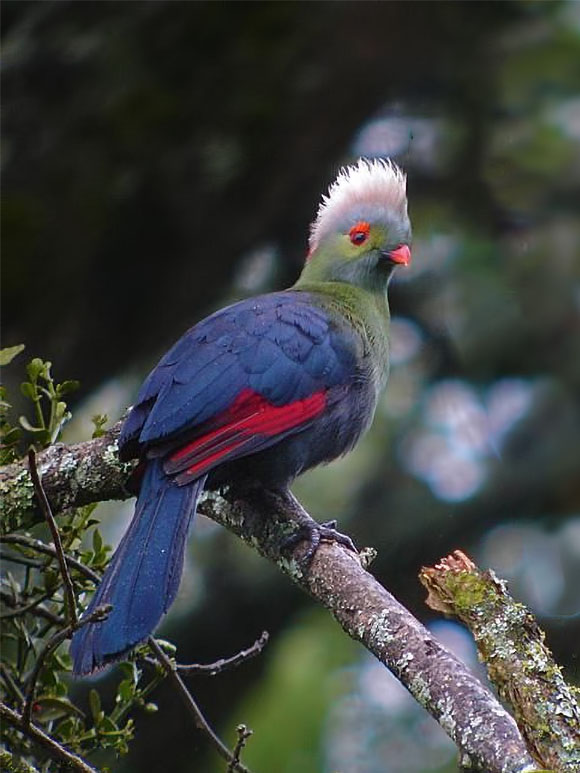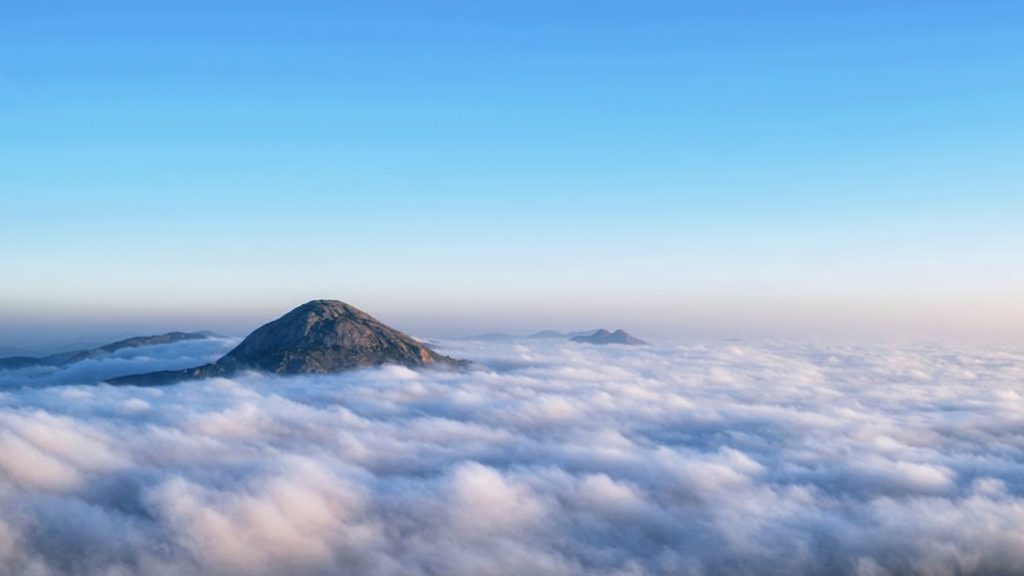- Overview
- Trip Outline
- Trip Includes
- Trip Excludes
- Booking
- FAQ
Sulawesi, located in eastern Indonesia sits within the biogeographical region of Wallacea, so named, after the great naturalist and explorer Alfred Russel Wallace. In his long visit to the region he recognized the distinct changes in fauna between western and eastern Indonesia, and marked an invisible line separating Bali to the west from Lombok to the east (later referred to as “the Wallace Line”), which serves to illustrate the change from Asian biota to the west, and Australasian fauna to the east. This has since been expanded to recognize a general zone of transition between these two great biogeographical zones of Asia and Australasia-Wallacea. Long periods of geographical isolation have left this region loaded with endemics, with some 90 or more found on Sulawesi. That is in a checklist of 450+ species. This ensures that any first time visitor to the region will leave with a bagful life birds
Starting city: Manado (North Sulawesi)
Ending city: Makassar (South Sulawesi)
Physical difficulty: Easy to Moderate
Focus: Birding
Bird Photography: Good
Walking condition: the walking ranges from easy to moderate, with some tracks with a good gradient at Anaso track, Lore Lindu Park, Gunung Ambang in Dumoga and Temboan hill near Tangkoko Park.
Transport & Road Condition: Vans or minibus used depending on size of the group. Roads are generally good but we shall also see some in bad condition. In the mangroves a small boat would be used.
Itineraries
Day 1
Manado arrival – Tangkoko Park
Arrival at Manado airport, meet and greet by our guide and transfer to Tangkoko by car. If we have time, we can do birding along the road before the park. Upon arrival in Tangkoko we will check-in first and after that, we continue to do birding in Tangkoko Park. Night at Tangkoko Hill Cottage. Meals (Breakfast, lunch, and dinner) are included during the stay in Tangkoko.
Day 2-3
Tangkoko Nature Reserve
This reserve on the eastern tip of the Minahassa Peninsula is one of Sulawesi’s flagship parks. The excellent lowland jungle and mangrove forest providing superb birding. The reserve is especially famous for kingfishers, having no less than eight resident species, of which four are endemic. We will be searching for Lilac cheeked kingfisher, Green-backed kingfisher, Sulawesi-dwarf kingfisher, Sulawesi Pitta, Rudy kingfisher, Common kingfisher, Blue-eared kingfisher, collared kingfisher, Red-Knobbed Hornbill, Sulawesi dwarf Hornbill, Ochre-bellied boobook, Yellow-billed Malkoha, Bay Coucal, Lesser coucal, Sulawesi-Hawk eagle, Sulawesi serpent eagle, Black eagle, Black kite, Sulawesi cicada bird, Rusty-breasted cuckoo, Sulawesi triller, Purple-winged roller, Ashy woodpecker, Sulawesi pygmy woodpecker, Sulawesi hanging parrot, Ornate lorikeet, Golden-mantled Racquetail, Blue-backed parrot, Grey-cheeked Green Pigeon, Black-naped Fruit dove, Green Imperial Pigeon, Grey-headed Imperial Pigeon, White-bellied Imperial Pigeon, Silver-tipped Imperial Pigeon, Sulawesi Black Pigeon, Stephan’s Dove, Brown-cuckoo dove, Philipine Scrubfowl, Barred rail and Isabeline Bush hen among others. During our boat trip to the mangrove we may find other species; White-rumped Cuckoo-shrike, Common kingfisher, Great-billed kingfisher, Pink-necked green Pigeon, Osprey, Great Frigatebirds, Lesser frigatebirds, Pacific reef egret, common dollar bird, Striated heron, Little tern, Sacred and Collared Kingfisher, White-bellied Sea eagle, Brahminy kite and Purple heron. After spending much of the day birding but we have time also to see interesting mammals such as Black-Macacanigra, Tarsier spectrum and Bear cuscus in Tangkoko Park. Three nights will be spent in a simple lodge just outside the park.
Day 4
Tangkoko – Tomohon
After birding in the morning and afternoon during the late afternoon we will drive to Tomohon (2.5hrs) for overnight stay. (Hot water shower)
Day 5
Gunung Mahawu
Gunung Mahawu is a forested Volcano, Inside the crater is a steaming, emerald-green lake ringed with yellow sulfur deposits. From the summit, you can see neighboring Mount Lokon with its ever-present plume of smoke. On a clear day, you can also see both the Sulawesi Sea on the west and to the Maluku sea to the east. GunungMahawu is located near the village of Rurukan where Sir Alfred Wallace lived for a while. Now GunungMahawu is an IBA. Here we have some interesting Sulawesi endemic species, it is one of the easiest and most reliable sites in Sulawesi for the Scaly-breasted kingfisher, this star bird is skittish and a skulker.
Day 6
Tomohon – Kotamobagu
On the way to Kotamobagu (6-7hrs drive), we have a great chance birding on Lake Tondano to see Purple swamphen, White-browed crake, Javan pond heron among other species. Lunch en-route and late afternoon we reach Kotamobagu, Check-in a hotel
Day 7
Dumoga Nani Wartabone National Park
The Maleo is the most handsome of all megapodes and is endemic to Sulawesi. its characteristic rolling call make the Maleo a must for bird-watchers visiting Sulawesi. After spending some time searching for Maleos, we will walk in this small forest patch, searching for a local endemic, Sulawesi crested Myna, White-necked Myna, Maroon-chinned Fruit-Dove, Yellow-billed Malkoha, the strange white-eyed race of Hair-crested Drongo, Black-billed Koel, Bay Coucal, Black-naped Fruit Dove, Sulawesi hanging Parrot, White-breasted Woodswallow and Sulawesi Hawk-Eagle. These forests also hold Sulawesi black Pigeon and perhaps get further chances at Sulawesi Pitta
Day 8
Gunung Ambang
This morning we will start very early and explore some of the surviving montane forests in GunungAmbang Nature Reserve. Here we try to find the Matinan flycatcher and we will also be hoping to encounter the beautiful the Scaly-breasted Kingfisher and if we are in luck we will spot the purple-bearded Bee-eater, Red-eared Fruit Dove, Sulawesi blue flycatcher, Sulawesi leaf warbler, Superb Fruit-dove, Ornate lorikeet, yellow and green lorikeet, Black-billed Koel, Sulawesi Pitta, Sulawesi Pygmy Woodpecker, Ashy Woodpecker, Malia, yellow sided flowerpecker, Sulawesi Myzomela. After a morning here we will Lunch near Gunung Ambang.
Day 9
Kotamobagu – Toraut – Gorontalo
Dumoga Nani Wartabone National Park- Morning birding in Toraut, another forested section of the park, where we hope to find the regularly roosting Speckled Boobook within the park buildings, and we might see other species; Pied Cuckooshrike, Sulawesi Dwarf-Kingfisher, Lilac cheeked Kingfisher, Green-backed Kingfisher, Maroon chinned Fruit Dove, Superb fruit Dove, Grey-headed Imperial Pigeon, Red Knobbed Hornbill, Sulawesi dwarf Hornbill, Grey-headed Fish eagle, this area also good for the endemic Ivory-backed Woodswallow, and is great for mynas, with Finch-billed, White-vented and Sulawesi (Crested) Mynas, Barred (Sulawesi) Honey-Buzzard. At 10 am we will drive to Gorontalo via Bolsel
Day 10
Gorontalo – Palu
Take a morning flight from Gorontalo to Palu. The capital town of Central Sulawesi, from where we will travel by car to Lore Lindu National Park, our base for exploring the montane forests of Lore Lindu National Park and we will stay three nights in a simple guesthouse in Wuasa, near to the national park.
Day 11-12
Lore Lindu National Park
There is no better to see Sulawesi’s unique avifauna, with 80% of the island’s endemic species, this park has a well-deserved reputation for montane specialties. Our main targets here are the magnificent Sulawesi endemic of the Purple-Beared Bee-Eater, Great Shortwing, Malia, Geomalia, Chestnut-backed Bush Warbler, noisy Caerulean cuckoo shrikes, Sulawesi Cicadabirds, Black-fronted White-eye, black Sunbird, Black-naped Monarch, and the Citrine Flycatcher, Island Flycatcher, Sulawesi Blue Flycatcher, Mountain serin, Sulawesi Myzomela, Ivory-backed wood-swallow, Ornate lorikeet, Small-sparrow hawk, Maroon-backed Whistler, Heinrich nightjar, Speckled boobook, CinabarBoobook, Sulawesi scops owl, Sulawesi pygmy woodpecker, Spot-tailed Goshawk, Spotted Kestrel, lemon-bellied white-eye, Sulawesi Triller, Sulawesi cicada bird, Sulawesi serpent eagle and many more with luck! On one of the days we will make the climb up the infamous Anaso Track, which allows access to higher altitudes, and the possibility of Sulawesi’s sole endemic bird family – Hylocitrea (yellow flanked whistler); the strange and rare Geomalia; along with Golden-mantled and Yellow-breasted Racquet-tails, Red-eared Fruit-Dove, Maroon-backed Whistler, White-eared Myza, and Streak-headed Dark-eye. These ascents will also give us a chance at the rare Mountain Serin, Sombre Pigeon, and with luck, we might see the Purple-bearded Bee-eater known as the world’s most interesting bee-eater. There is also often the chance to find Diabolical Nightjars roosting during the day.
Day 13
Lore Lindu National Park
After birding we pck in some food and in the late afternoon drive back to Palu for overnight stay.
Day 14
YPalu – Makassar our Plan
Breakfast at the hotel afterward transfers to Palu airport a flight to Makassar.
Afternoon trip to Makassar and rice field and fishponds for Pale-headed Munia, Black-faced Munia, ChesnutMunia, White-shouldered triller, Javan Pond Heron, White-headed Stilt, Sacred Kingfisher, lesser coucal.
Day 15
Karaenta forest – Makassar – Departure
Early morning breakfast at the hotel then we will travel up into the forested limestone hills north of Makassar city. Karaenta Nature Reserve is the good place to spot an endemic that is confined to South Sulawesi the local Black-ringed White-eye, This forest also provides a good chance to see the Sulawesi Dwarf Hornbill, Yellow-billed Malkoha, Red Knobbed Hornbill, Sulawesi crested Myna, Piping Crow, Sulawesi Goshawk and with luck the White-necked Myna. In this forest, we might also find the Sulawesi Streaked Flycatcher
Accommodation, transportation, entrance fee to the parks, bird guide fee, car driver and donation.
Extra beverages in the hotel/Restaurant, Soft drinks/Alcoholic drinks, laundry, phone calls, donation, personal insurance.
Airfare, domestic or international.
All expenses not mentioned on items above. Any kind of expenditures incurred due to flight cancellation/delays or due other causes beyond our control, domestic flights
No Details Found




